While do-it-yourself projects can be fun and fulfilling, there is always a potential for personal injury or property damage. We strongly suggest that any project beyond your abilities be left to licensed professionals such as electricians, plumbers, and carpenters. Any action you take upon the information on this website is strictly at your own risk, and we assume no responsibility or liability for the contents of this article.
Washing Machine Maintenance

The washing machine is the unseen workhorse of the modern family. While it’s often responsible for washing dozens of loads of dirty laundry per week, it’s usually ignored until something goes wrong. Yet many issues, from unpleasant odors to unbalanced loads, can be prevented by a little routine maintenance. Taking the time to clean and maintain your washing machine will keep it working longer and result in cleaner-looking and smelling clothes.
Run a Service Wash
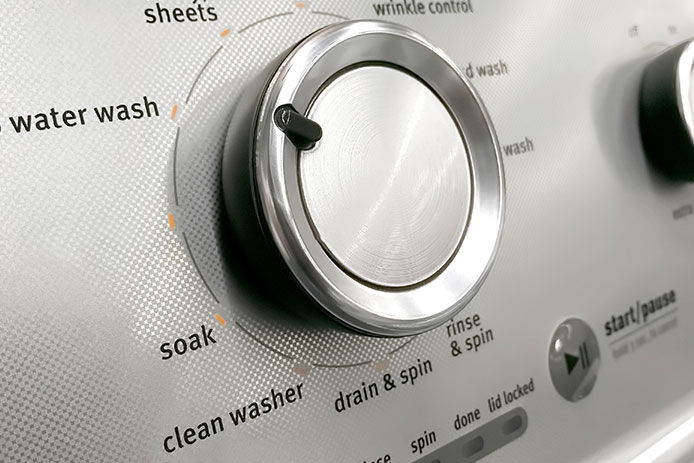
If you wouldn’t bathe in a dirty bathtub, make sure you’re not washing your clothes in a dingy washing machine tub. A service wash is the easiest way to remove grime, dirt, and bacteria without having to lean awkwardly into the machine to scrub it by hand. Many modern washing machines include a specialty self-cleaning option. Even if your washing machine doesn’t have a service wash function, you can create your own by running the machine on a full wash with the hottest setting of water and no clothes in the tub. Try adding a washing machine cleaner or a washing machine solution or 1 cup of white vinegar to sanitize and lift grime. Don’t add any normal detergent since it’s not necessarily helpful for lifting the deposits that form in the tub of the washing machine.
Clean the Dispensers
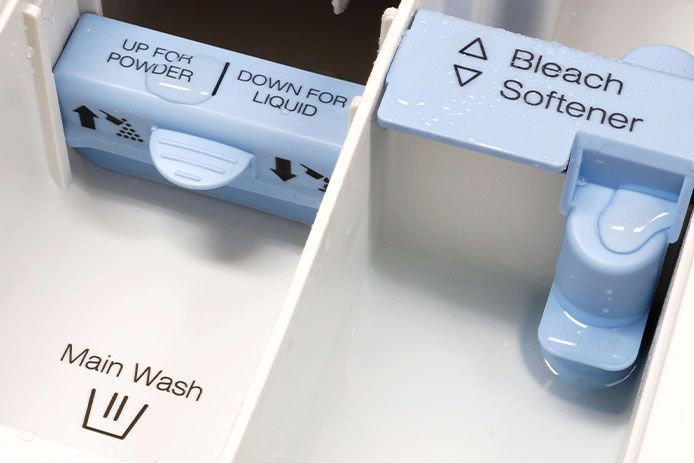
Most washing machines feature dispensers that make it easy for you to add your favorite detergents, bleach or sanitizing products and fabric softeners at the right time in the cycle. Yet even after just a few months of use, the residues of the cleaning products attract lint and become gunked up. A small soft-bristled brush, preferably slightly larger than your everyday toothbrush, is the best tool for tackling stuck-on soap or softener spills. Rinse the dispensers with water, then rinse out the washtub to wash away the residue before your next load of laundry. Spray the dispenser areas with bleach if you notice any mildew growth.
Touch Up the Interior
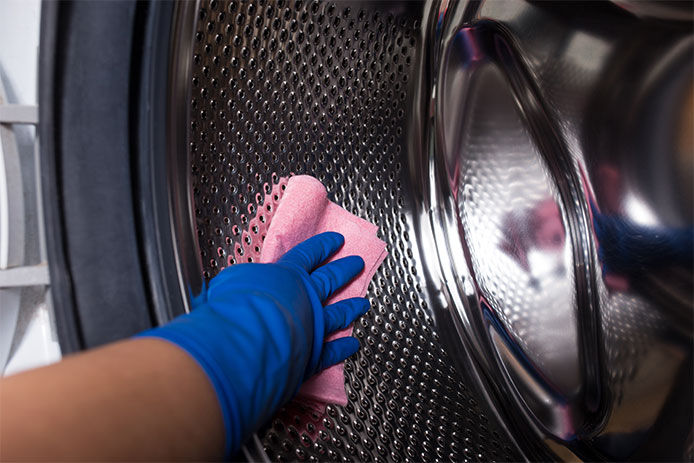
Even after running a service wash like clockwork once every two to three months, you may notice some dirt or grime building up on the inside of the washing machine. It’s especially common on the inside of the top of a top-loading machine, where water splashes debris but isn’t regularly rinsed off during the wash. Wiping these areas down with a diluted bleach solution of ¼ cup of bleach to 1 gallon of water will loosen the grime and prevent mildew growth. Use a common dish sponge with a scrubbing side to work loose any sticky deposits without damaging the interior of the tub or gaskets.
Check the Hoses
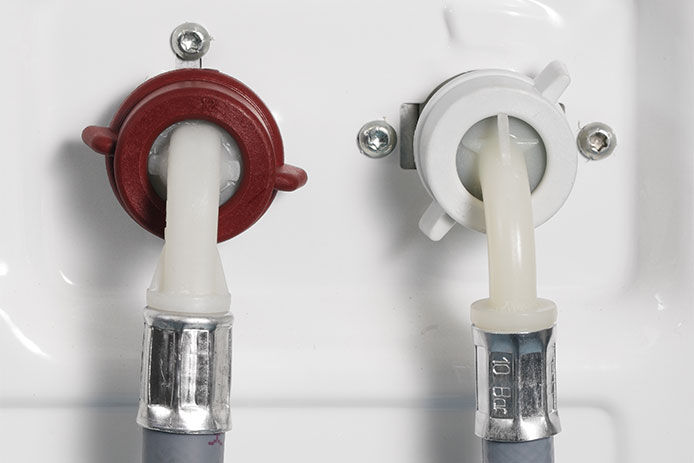
Washing machine hoses supply hot and cold water, but they can develop cracks or come loose over time. This leads to persistent leaks and a lack of water flow into the washing machine. If you notice the water temperature isn’t right, there’s a mildew smell around the washer but not inside it, or you see water puddling from underneath the washer, check the hoses first. Slide the washer slowly forward or out of its niche to expose the hoses behind it. Putting on new hoses is a job any homeowner can handle, but make sure to turn the water valves off first.
Clean the Door Gasket
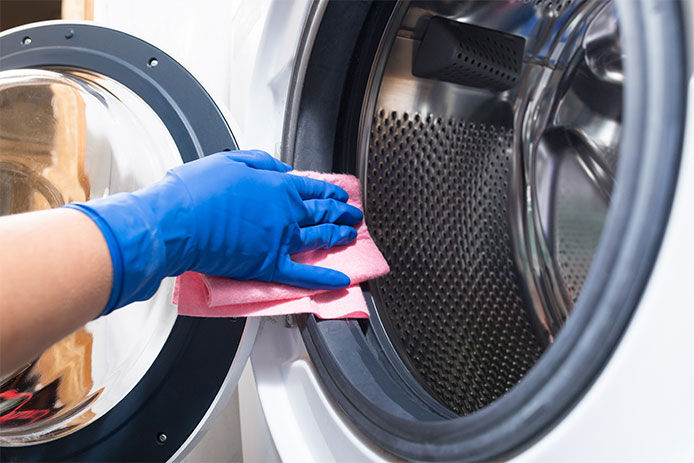
The door gasket on the washing machine will collect a wide array of dirt as you load dry but dusty clothes in and then remove them wet and dripping. Wipe the gasket down at least once a month and check it over for signs of mildew growth or cracking. Replacing a worn door gasket improves the efficiency of the washing machine and reduces humidity levels in your laundry room.
Tackle the Lint Filter
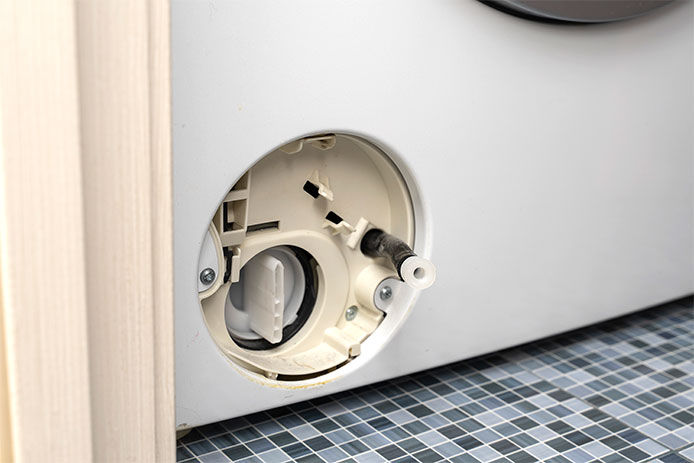
While the lint filter inside the washing machine isn’t as easy to access as it is in the dryer, it still needs cleaning at least once every six months. Going a few years without cleaning the lint trap on a washing machine will slow its drainage speed to a crawl. Check the manufacturer’s manual for details on how to access the lint filter or trap in your specific model of washing machine. They’re often installed in the center agitator of a top-loading machine or where the drain hose connects to the back of the machine.
Take Care of High-efficiency Machines

High-efficiency washing machines need all the same maintenance listed above to run as designed. But these specialty machines also need careful attention to how much product is used during each wash. Just the simple act of adding a teaspoon more detergent than called for each wash quickly reduces the efficiency of the washing machine and leads to build-up inside the tub. Have the machine professionally serviced if you discover you’ve been overloading on detergent since there are many valves and hoses that can clog inside the machinery and aren’t accessible to the homeowner.
Don’t let your washing machine cost more to run or develop a musty odor just because it’s being ignored. Give it a little attention once every few months to earn many more years of reliable service from the same equipment.